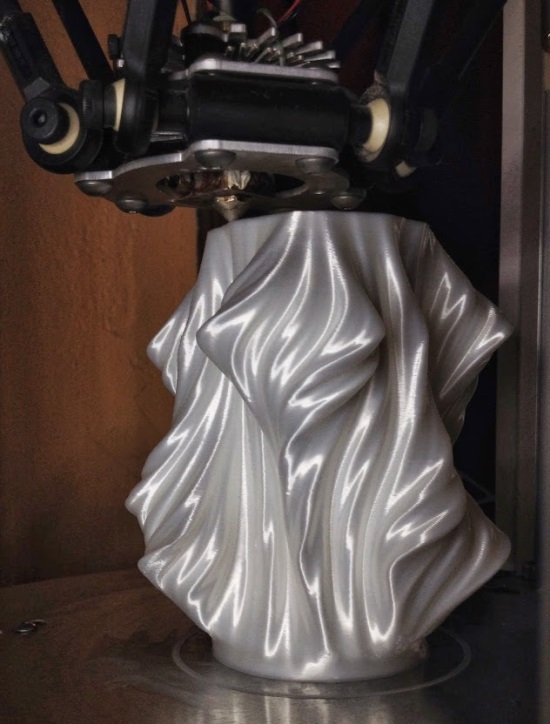New Materials Offer a Green Future for Additive Manufacturing

An artistic product being built with bioFila silk. Courtesy of twoBEars.
Latest News
March 31, 2014
It’s easy to forget just how many items we use every day are made from some form of plastic. Take a quick look around and see how many plastic products you can spot. Everything from chairs to eyewear is made from plastic. The cost of all that convenience is paid for by diminishing room in landfills and masses of plastic waste floating in the Pacific Ocean.
Biodegradable plastics offer a bridge between the convenience of plastic and an environmentally sound attitude toward manufacturing. Additive manufacturing (AM) is beginning to embrace the potential of biodegradable plastic and three new green material options have recently been launched.

German startup twoBEars has launched two new biofabrication materials collectively called bioFila. Both materials are based on lignin, a complex polymer of aromatic alcohols known as monolignols, which is commonly derived from wood. The end result is completely biodegradable while, according to the company, retaining the durability required for 3D printed products.
BioFila silk can be printed to a layer thickness of 0.45 mm, and offers an (unsurprisingly) silky look and sheen to finished objects. A completed print has a softer look than is usual with standard plastic AM materials such as ABS. BioFila linen offers a finished product with a cloth-like appearance. The linen option can also be printed to a layer thickness of 0.45 mm. Both bioFila options sell for 49.90€ / 750g (about $69/26.5 oz.).
Sierra Resins and 3D Printlife have also partnered to develop a new bioplastic filament. Along with AM, the new bioplastic is targeting film applications and injection-molded products. The goal is to produce a 100% biodegradable product that can also fill a wide range of manufacturing needs.
“Processability, smoothness, and adherence to tolerances were good,” said John Tersigni, President and CEO of Sierra Resins. “We’re now going to submit this particular grade of 3D biofilament to an independent ASTM certified biodegradability testing laboratory. We’re happy about the initial results, so it’s a good sign.”
Hopefully these products will join a growing stream of biodegradable AM materials, perhaps allaying any concerns that the growth of 3D printing will be accompanied by a new influx of plastic refuse. Eventually we may see the majority of AM products being printed in bioplastics, which should help assuage any environmental concerns about the technology.
Below you’ll find a clip featuring a test print of Sierra Resins and 3D Printlife’s new bioplastic.
Sources: twoBEars, Sierra Resins
Subscribe to our FREE magazine, FREE email newsletters or both!
Latest News
About the Author
John NewmanJohn Newman is a Digital Engineering contributor who focuses on 3D printing. Contact him via [email protected] and read his posts on Rapid Ready Technology.
Follow DE





